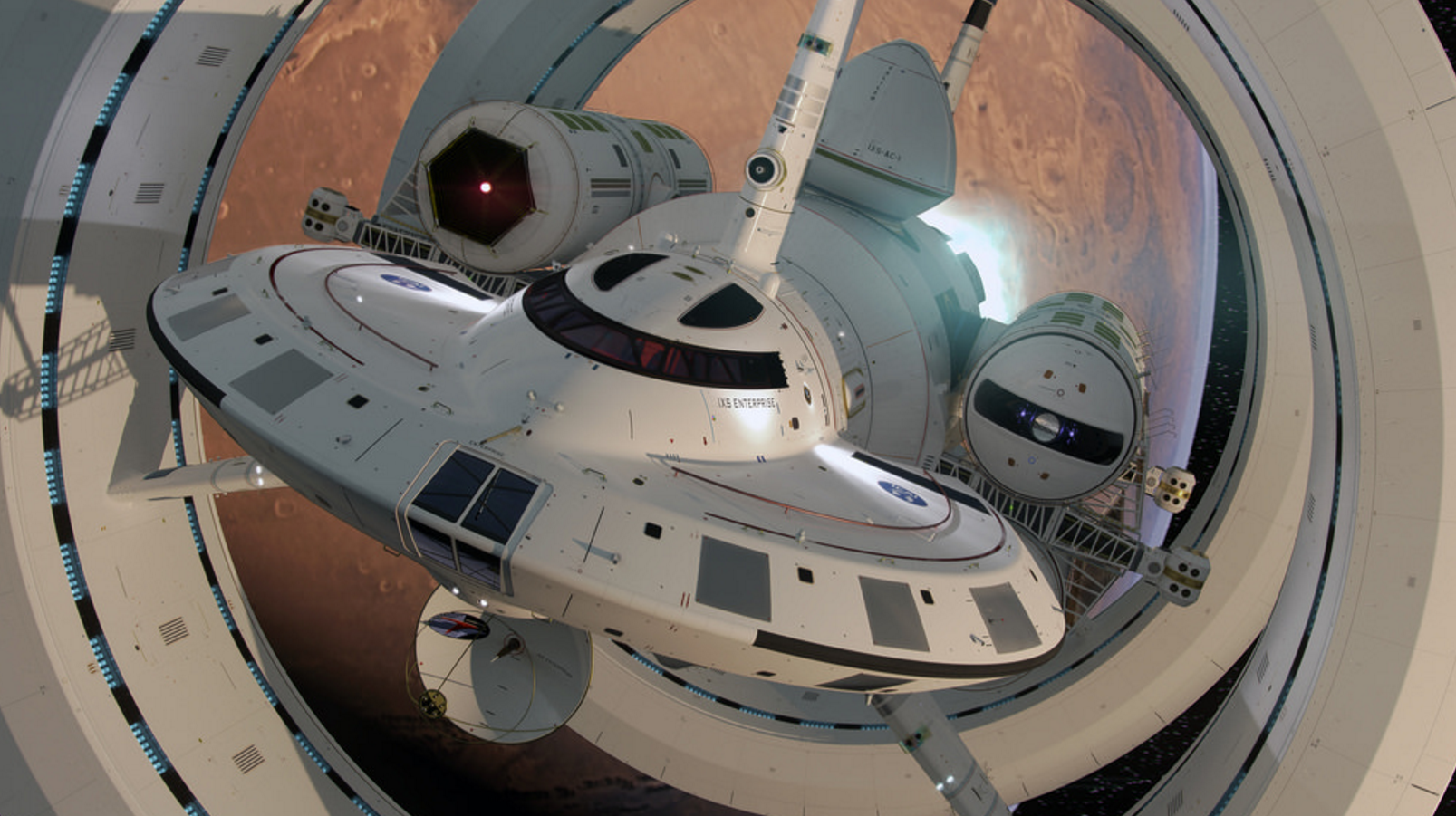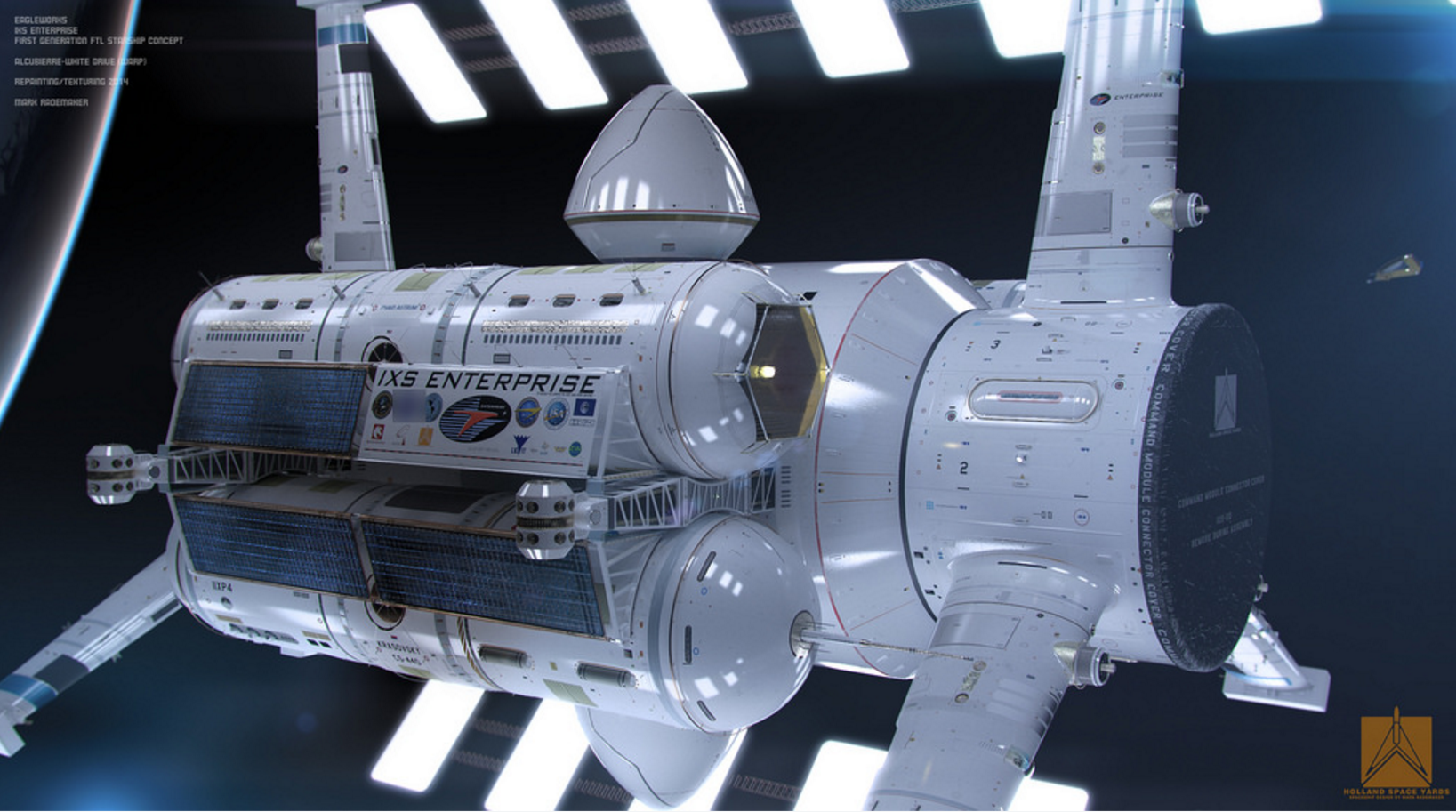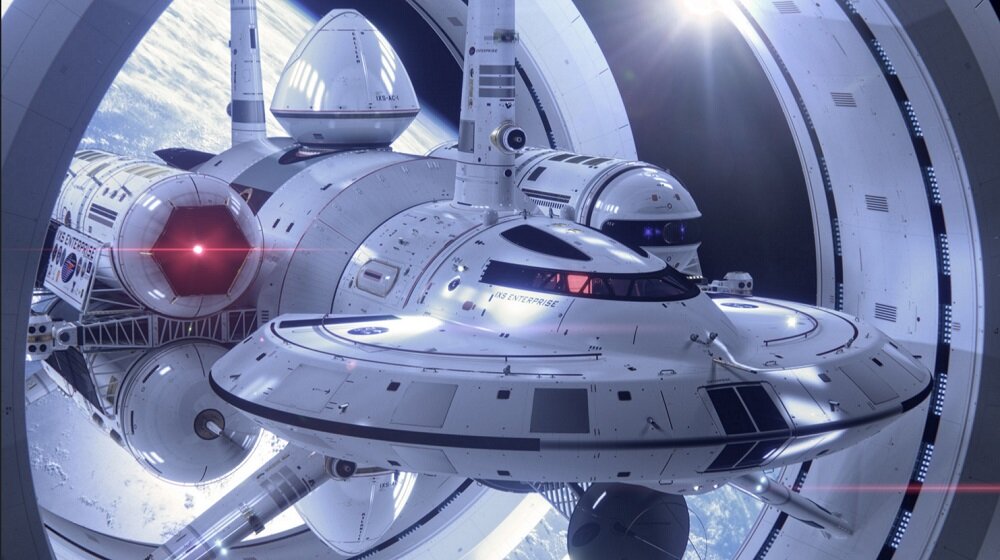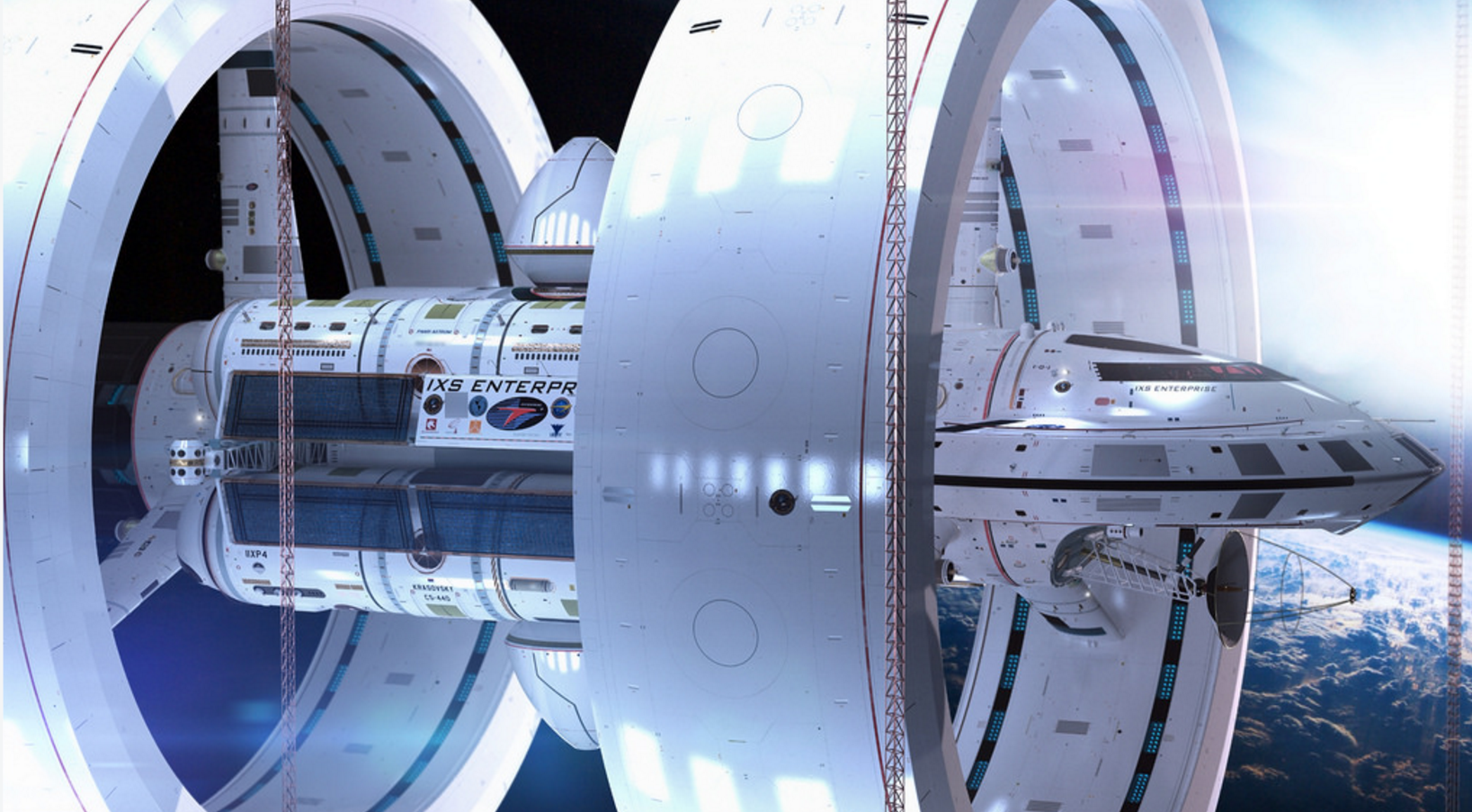The laws of relativity dictate that nothing can travel faster than the speed of light, yet despite this, science fiction has this fantastic habit of just making up reasons as to why we can.
Perhaps the best known form of faster than light travel in fiction comes from the Star Wars franchise. The first Star Wars movie was released on May 25, 1977 and used the term “Light Speed” to describe the way ships travel so fast. However they travel much faster than the actual speed of light because they go into what Star Wars calls “hyperspace.”
The Millennium Falcon exits hyperspace, The Force Awakens (2015)
The general idea behind the hyperspace in Star Wars is that a ship, like the Millennium Falcon, breaks through into a dimension that exists just underneath normal space-time. In this dimension the distance between locations is smaller, so when they travel through it, they will come out at the other end having travelled an enormous distance in a relatively small amount of time. A unique detail introduced by George Lucas was the time it takes to calculate the “jump to light speed.” Otherwise they could end up flying through a sun or black hole, it gives stakes to every time they make a jump. Many versions of faster than light travel use some variation of the “hyperspace” idea, entering a dimension that exists underneath normal space so they can travel great distances much quicker. However, this isn’t an idea that originated with Star Wars.
Somnium title page recreation (1634)
One of the earliest known instances of the faster than light concept, specifically the dimension underneath space, is found in a novel named Somnium.
Somnium is latin for the “The Dream” and was written by German mathematician, astronomer, and astrologer, Johannes Kepler in 1608, however it wasn’t published until after his death in 1634. The story centres on Kepler himself, having a strange dream. In the dream his mother summons her favourite daemon. The daemon tells Kepler of his home on the moon, which is situated eighty thousand kilometres away.
In reality the moon is actually 384,400km away. But if it was only 80,000kms away, it would still take 55 days to get to the moon travelling at an average speed of 60km/h, which is faster than any vehicle that existed when Kepler was alive. However, in Kepler’s dream the daemons claim that there is a “pathway,” that when opened, humans can travel with them to the moon in only four hours.
On a conceptual level, this is the exact same idea as the hyperdrive in Star Wars. After Somnium, the more modern idea of faster than light travel started to show up in the early to mid-20th century. One notable piece of work is Islands of Space, which is generally credited with introducing the idea of faster than light travel into Science Fiction. Islands of Space was originally published in Amazing Stories Quarterly in 1931. Amazing Stories Quarterly was an offshoot of the Amazing Stories magazine, which is considered by some as the first science fiction magazine. Islands of Space was later published as a novel in 1957. The novel is about a faster than light Earth starship.
Morey say’s "We made good time! Twenty-nine light years in ten seconds! Yet you had it on at only half power...." Arcot pushed the control lever all the way to full power. The ship filled with the strain of flowing energy, and sparks snapped in the air of the control room as they raced at an inconceivable speed through the darkness of intergalactic space.
- Excerpt from Islands of Space
This is much more inline with our modern day idea of faster than light travel compared to the more magical, daemon dream world of Somnium.
Jumping forward to 1963 the world was introduced to a mad man in a blue box in Doctor Who. Doctor Who is interesting because the main form of travel is the TARDIS, which not only travels in space but also in time. At the beginning of every episode the TARDIS is seen appearing from nowhere, before disappearing and reappear in another place. Yet when the characters are seen inside the TARDIS, it shows that it still takes time to move through the time vortex. We see the Doctor jumping around the console room as he pulls leavers and nobs. The TARDIS may disappear then reappear a moment later, but more time than that has passed for the traveller. In Doctor Who’s case the time vortex takes the place of hyperspace as the dimension underneath space-time.
The Hitchhikers Guide to the Galaxy by Douglas Adams (1979)
In 1978 a radio drama named The Hitchhikers Guide to the Galaxy aired on BBC Radio 4. This radio drama was then turned into a novel, a TV show, more radio dramas and a film. The Hitchhikers Guide to the Galaxy follows a human man named Arthur Dent who is saved from the destruction of Earth. Earth is destroyed by an alien race called the Vogon’s in order to build a new hyperspace bypass. On his journey Arthur Dent ends up on the starship the Heart of Gold, a ridiculous, bulbous ship that has an improbability drive. What’s fascinating about The Hitchhikers Guide to the Galaxy is that in this world they have hyperspace, but it’s congested, complex and terrible to use. As a result, some aliens build bypasses, which acts as the inciting incident in the story. Meanwhile the main characters use the improbability drive, which gets you to a destination instantaneously, it’s just not necessarily where you want to go. Its style of instantaneous travel is similar to the TARDIS in Doctor Who. However in Doctor Who, the Doctor has limited control over the TARDIS while in The Hitchhikers Guide to the Galaxy they have none at all. You just have to make the best of wherever you land.
Next to Star Wars, it could be argued that the most popular form of faster than light travel came in the Star Trek franchise. Unlike the other forms of faster than light travel listed above, there is no dimension underneath space used in Star Trek, instead the the ships use a Warp Drive, which literally warps the space in front and behind the ship so that it doesn’t have as much distance to physically move over. Star Trek has such a deep law that it would be easy to fall into a nerdy rabbit hole and explain exactly how Dilithium Crystals work and why the Romulan’s use black holes… but it’s probably best to not. Star Trek has a habit of constantly reinventing itself, and that includes the faster than light travel.
Star Trek: Discovery has done one of the most interesting variations on the idea of faster than light travel that has come out in the last few years. The ship has a garden where they grow spores, which some characters believe are the original building blocks of the universe. The logic then tracks that they can use these spores in a Spore Drive to shift the matter of the entire Discovery ship through space in an instant.
Star Trek: Discovery (2017)
No matter what you might think of Star Trek: Discovery, the Spore Drive is a new and creative idea what resulted in a fresh take on faster than light travel, with great looking visuals. It also gives some great options for interesting storytelling. Because Star Trek: Discovery is a prequel and we have never seen a Spore Drive in the future of Star Trek, something is going to go horrible wrong, which we now know is time travel. It’s a shame because a Spore Drive would have come in real handy when Voyager was stuck on the other side of the galaxy.
Science Fiction is one of the most fun genres to write in because it shows us what could be. While the Spore Drive on the Discovery and the Hyperdrive on the Millennium Falcon are both completely fictional, Star Trek’s Warp Drive now has some basis in fact. In recent years NASA has researched and acknowledged that it may be possible in the future to travel at warp speed, going so far as to conceptualise a ship design (pictured below). It’s a great example of how Science Fiction can inspire us and help build the future.









